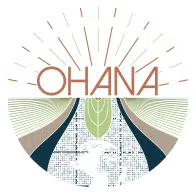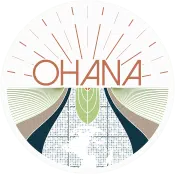
Interview with Textile Exchange: Why Balanced Subject Expertise is Key in the Sustainability Debate
It’s no secret that the textile industry is one of the EU Commission’s main sectors of attention when it comes to anticipated sustainability policy. The fashion industry is a large polluter in the world, and for that reason, many of the latest pieces of legislation being presented in Brussels bring new rules to be followed by textile companies and their suppliers.
The fashion and textile industry players can expect significant challenges in adhering to these new rules in the near future but they are not without help in making that transition. Our client, Textile Exchange, a global non-profit driving beneficial impact on climate action across the fashion and textile industry, is an example of the guidance available to these organisations.
In this interview with Beth Jensen, Climate+ Impact Director at Textile Exchange we learn more about:
- How Textile Exchange works with brands, manufacturers, and farmers to drive positive change
- Why balance and interconnectivity are key in the sustainability discussion
- How subject matter expertise can be useful in shaping appropriate policies
If you’d like to hear more from industry experts about new sustainability policies and the green transition, have a look at Ohana’s complete interview series, which includes a conversation with the Sustainable Fashion Academy, and a special piece on the subject of microplastics with EOG and FESI. In our interview with Sympatex, you will find out how small players can get their voices heard in Brussels and for tips on how to combine education with advocacy, be sure to read the interview with Policy Hub. Finally, our chat with ChemSec offers brilliant insights to help you understand how companies can lead sustainability advances in EU chemicals policy.
Want someone with deep experience and connections in the EU to help guide your sustainability strategy? Get in touch!
Introducing Textile Exchange and its mission
Founded in 2002, Textile Exchange is a global nonprofit guiding a growing community of brands, manufacturers, and farmers towards more purposeful production from the very start of the supply chain. As an organisation, Textile Exchange develops, manages, and promotes a suite of leading industry standards, but also collects and publishes critical industry data and insights that enable brands and retailers to measure, manage and track their use of preferred fibre and materials.While well aware of the challenges faced by anyone interested in advancing the subject of sustainability within industries like fashion and textiles, the organisation believes in the power of collaboration to achieve its main goal.
“Our goal is to help the industry to achieve a 45% reduction in the greenhouse gas (GHG) emissions that come from producing fibres and raw materials by 2030.”, says Jensen.
Textile Exchange’s mission is simple and powerful: to inspire and equip people to accelerate the adoption of preferred materials through clear and actionable guidance.
Such a relevant mission, paired with strong company values is what makes Ohana so proud to have Textile Exchange as a client who we support with engagement strategies, legislation monitoring and analysis and much more.
According to Jensen, Ohana is considered a key organisational partner for Textile Exchange to which she explains “As we are not a ‘policy organisation’, our internal resourcing related to policy engagement is limited. Ohana helps us fill this gap, providing critical insights and guidance on how to engage in priority issues most effectively.”
A three-dimensional approach to sustainability
The word ‘sustainability’ is as broad as it is relevant, so we decided to ask Textile Exchange’s Climate+ Impact Director, for their definition of sustainability and how the term is understood within their organisation.
“Our definition is that sustainability should be three-dimensional, consisting of environmental, social, and economic factors. Each of the dimensions should be in balance with the others. Alongside the concept of balance is that of interconnectivity.”
When asked to comment further on the relationship between sustainability and the ideas of balance and interconnectivity Jensen explained, “Usually if one dimension of sustainability is out of step with the others, the benefits will only be temporary or short-lived. On the other hand, if equal attention is paid to all, long-term sustainability and resilience will result.”
The need for balance and interconnectivity mentioned by Jensen falls perfectly in line with the text of the EU Commission’s latest legislative proposals, containing rules not only related to environmental protection but also covering the economic and social aspects of sustainability. One of the best examples of this holistic approach is the EU Textiles Strategy, which is considered a priority policy for Textile Exchange, along with the Empowering Consumers for the Green Transition Directive.
“The EU’s Circular Economy Action Plan (CEAP) is by far the most comprehensive and ambitious policy proposal we are aware of globally”, says Jensen.
But the statement is soon followed by another important remark: “The task ahead for the EU Commission will be to ensure that the various files within the CEAP strike the right balance of ambition and reality given the state of the industry today and that they drive the intended outcomes. Connectivity and consistency across the various CEAP files will also be important to ensure adoption and implementation.”
The role of subject matter expertise in shaping policy
Congregating so many different interests and dimensions in one piece of legislation is never simple. In addition, the matter of how stakeholders influence policy is also important.
We asked Jensen if for Textile Exchange there was a difference between lobbying, public affairs, engagement and advocacy, and what these terms meant for their organisation. Regarding the polemics around the term ‘lobbying’, she commented “Lobbying does not necessarily need to come with negative connotations–it can also be a powerful lever for positive change.”
Once again mentioning the limitations faced by certain types of organisations, Jensen said
“As a nonprofit organisation, there are limits to how much direct contact with policymakers Textile Exchange can have. So, in the context of our strategy, we prefer to use the term ‘policy engagement’, as it more accurately describes what we do. We focus primarily on providing subject matter expertise on developing policies that are relevant to sustainable fibres and materials.”
Following up on her last comment, we wanted to know Jensen’s opinion on how subject matter experts can contribute to the policy debate, to which she responded by saying that “Two of our organisation’s key value drivers are ‘trusted authority’ and ‘convener’ – our value to the industry is in our subject matter expertise related to preferred materials, and in providing a platform to share learnings and best practices.”
Speaking about Textile Exchange’s specific status as a non-profit, Jensen added “As a 501(c)(3) non-profit organization, we exist to serve the greater good of the industry and therefore can provide credible, agnostic feedback into policymaking processes, driven by the collective input of our members.”
Using expert knowledge to drive change
Textile Exchange’s collection and analysis of relevant data has been instrumental in convincing major stakeholders in the sector of the need to act on climate change, and thus there is a need for strategic initiatives and organisations, such as Textile Exchange, to guide these same stakeholders towards new and appropriate sustainability standards and solid results.
In Jensen’s own words:
“For real change to happen, everyone needs a clear path to beneficial impact. That’s why we believe that approachable, step-by-step instruction paired with collective action can catalyze change, mobilizing leaders through attainable strategies, proven solutions, and a driven community.”
Want someone with deep experience and connections in the EU to help guide your sustainability strategy? Get in touch!
Join our newsletter to keep up to date with the latest news and information coming out of the EU.
Interview with Textile Exchange: Why Balanced Subject Expertise is Key in the Sustainability Debate
It’s no secret that the textile industry is one of the EU Commission’s main sectors of attention when it comes to anticipated sustainability policy. The fashion industry is a large polluter in the world, and for that reason, many of the latest pieces of legislation being presented in Brussels bring new rules to be followed by textile companies and their suppliers.
The fashion and textile industry players can expect significant challenges in adhering to these new rules in the near future but they are not without help in making that transition. Our client, Textile Exchange, a global non-profit driving beneficial impact on climate action across the fashion and textile industry, is an example of the guidance available to these organisations.
In this interview with Beth Jensen, Climate+ Impact Director at Textile Exchange we learn more about:
- How Textile Exchange works with brands, manufacturers, and farmers to drive positive change
- Why balance and interconnectivity are key in the sustainability discussion
- How subject matter expertise can be useful in shaping appropriate policies
If you’d like to hear more from industry experts about new sustainability policies and the green transition, have a look at Ohana’s complete interview series, which includes a conversation with the Sustainable Fashion Academy, and a special piece on the subject of microplastics with EOG and FESI. In our interview with Sympatex, you will find out how small players can get their voices heard in Brussels and for tips on how to combine education with advocacy, be sure to read the interview with Policy Hub. Finally, our chat with ChemSec offers brilliant insights to help you understand how companies can lead sustainability advances in EU chemicals policy.
Want someone with deep experience and connections in the EU to help guide your sustainability strategy? Get in touch!
Introducing Textile Exchange and its mission
Founded in 2002, Textile Exchange is a global nonprofit guiding a growing community of brands, manufacturers, and farmers towards more purposeful production from the very start of the supply chain. As an organisation, Textile Exchange develops, manages, and promotes a suite of leading industry standards, but also collects and publishes critical industry data and insights that enable brands and retailers to measure, manage and track their use of preferred fibre and materials.While well aware of the challenges faced by anyone interested in advancing the subject of sustainability within industries like fashion and textiles, the organisation believes in the power of collaboration to achieve its main goal.
“Our goal is to help the industry to achieve a 45% reduction in the greenhouse gas (GHG) emissions that come from producing fibres and raw materials by 2030.”, says Jensen.
Textile Exchange’s mission is simple and powerful: to inspire and equip people to accelerate the adoption of preferred materials through clear and actionable guidance.
Such a relevant mission, paired with strong company values is what makes Ohana so proud to have Textile Exchange as a client who we support with engagement strategies, legislation monitoring and analysis and much more.
According to Jensen, Ohana is considered a key organisational partner for Textile Exchange to which she explains “As we are not a ‘policy organisation’, our internal resourcing related to policy engagement is limited. Ohana helps us fill this gap, providing critical insights and guidance on how to engage in priority issues most effectively.”
A three-dimensional approach to sustainability
The word ‘sustainability’ is as broad as it is relevant, so we decided to ask Textile Exchange’s Climate+ Impact Director, for their definition of sustainability and how the term is understood within their organisation.
“Our definition is that sustainability should be three-dimensional, consisting of environmental, social, and economic factors. Each of the dimensions should be in balance with the others. Alongside the concept of balance is that of interconnectivity.”
When asked to comment further on the relationship between sustainability and the ideas of balance and interconnectivity Jensen explained, “Usually if one dimension of sustainability is out of step with the others, the benefits will only be temporary or short-lived. On the other hand, if equal attention is paid to all, long-term sustainability and resilience will result.”
The need for balance and interconnectivity mentioned by Jensen falls perfectly in line with the text of the EU Commission’s latest legislative proposals, containing rules not only related to environmental protection but also covering the economic and social aspects of sustainability. One of the best examples of this holistic approach is the EU Textiles Strategy, which is considered a priority policy for Textile Exchange, along with the Empowering Consumers for the Green Transition Directive.
“The EU’s Circular Economy Action Plan (CEAP) is by far the most comprehensive and ambitious policy proposal we are aware of globally”, says Jensen.
But the statement is soon followed by another important remark: “The task ahead for the EU Commission will be to ensure that the various files within the CEAP strike the right balance of ambition and reality given the state of the industry today and that they drive the intended outcomes. Connectivity and consistency across the various CEAP files will also be important to ensure adoption and implementation.”
The role of subject matter expertise in shaping policy
Congregating so many different interests and dimensions in one piece of legislation is never simple. In addition, the matter of how stakeholders influence policy is also important.
We asked Jensen if for Textile Exchange there was a difference between lobbying, public affairs, engagement and advocacy, and what these terms meant for their organisation. Regarding the polemics around the term ‘lobbying’, she commented “Lobbying does not necessarily need to come with negative connotations–it can also be a powerful lever for positive change.”
Once again mentioning the limitations faced by certain types of organisations, Jensen said
“As a nonprofit organisation, there are limits to how much direct contact with policymakers Textile Exchange can have. So, in the context of our strategy, we prefer to use the term ‘policy engagement’, as it more accurately describes what we do. We focus primarily on providing subject matter expertise on developing policies that are relevant to sustainable fibres and materials.”
Following up on her last comment, we wanted to know Jensen’s opinion on how subject matter experts can contribute to the policy debate, to which she responded by saying that “Two of our organisation’s key value drivers are ‘trusted authority’ and ‘convener’ – our value to the industry is in our subject matter expertise related to preferred materials, and in providing a platform to share learnings and best practices.”
Speaking about Textile Exchange’s specific status as a non-profit, Jensen added “As a 501(c)(3) non-profit organization, we exist to serve the greater good of the industry and therefore can provide credible, agnostic feedback into policymaking processes, driven by the collective input of our members.”
Using expert knowledge to drive change
Textile Exchange’s collection and analysis of relevant data has been instrumental in convincing major stakeholders in the sector of the need to act on climate change, and thus there is a need for strategic initiatives and organisations, such as Textile Exchange, to guide these same stakeholders towards new and appropriate sustainability standards and solid results.
In Jensen’s own words:
“For real change to happen, everyone needs a clear path to beneficial impact. That’s why we believe that approachable, step-by-step instruction paired with collective action can catalyze change, mobilizing leaders through attainable strategies, proven solutions, and a driven community.”
Want someone with deep experience and connections in the EU to help guide your sustainability strategy? Get in touch!
Join our newsletter to keep up to date with the latest news and information coming out of the EU.


